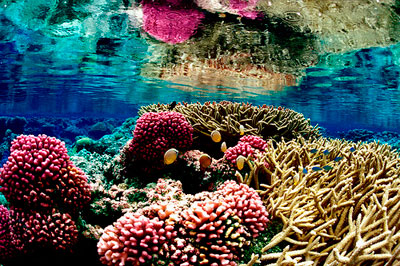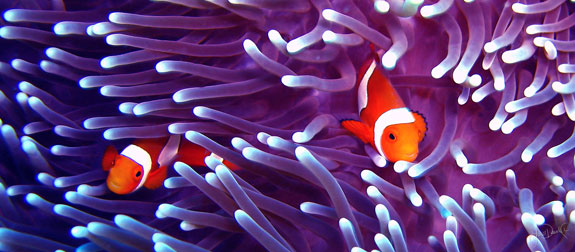Ocean Acidity Rivals Climate Change As Environmental Threat
Rising ocean acidity is now considered to be just as much of a formidable threat to the health of Earth’s environment as the atmospheric climate changes
Anthropogenic emissions of greenhouse gases are increasing ocean acidity at an alarming pace. A new study offers hope that some species may survive as a result of rapid adaptation. Photo courtesy of Flickr user JamesDPhotography.
Since the Industrial Revolution, ocean acidity has risen by 30 percent as a direct result of fossil-fuel burning and deforestation. And within the last 50 years, human industry has caused the world’s oceans to experience a sharp increase in acidity that rivals levels seen when ancient carbon cycles triggered mass extinctions, which took out more than 90 percent of the oceans’ species and more than 75 percent of terrestrial species.
Rising ocean acidity is now considered to be just as much of a formidable threat to the health of Earth’s environment as the atmospheric climate changes brought on by pumping out greenhouse gases. Scientists are now trying to understand what that means for the future survival of marine and terrestrial organisms.
In June, ScienceNOW reported that out of the 35 billion metric tons of carbon dioxide released annually through fossil fuel use, one-third of those emissions diffuse into the surface layer of the ocean. The effects those emissions will have on the biosphere is sobering, as rising ocean acidity will completely upset the balance of marine life in the world’s oceans and will subsequently affect humans and animals who benefit from the oceans’ food resources.
The damage to marine life is due in large part to the fact that higher acidity dissolves naturally-occurring calcium carbonate that many marine species–including plankton, sea urchins, shellfish and coral–use to construct their shells and external skeletons. Studies conducted off Arctic regions have shown that the combination of melting sea ice, atmospheric carbon dioxide and subsequently hotter, CO2-saturated surface waters has led to the undersaturation of calcium carbonate in ocean waters. The reduction in the amount of calcium carbonate in the ocean spells out disaster for the organisms that rely on those nutrients to build their protective shells and body structures.
The link between ocean acidity and calcium carbonate is a directly inverse relationship, which allows scientists to use the oceans’ calcium carbonate saturation levels to measure just how acidic the waters are. In a study by the University of Hawaii at Manoa published earlier this year, researchers calculated that the level of calcium carbonate saturation in the world’s oceans has fallen faster in the last 200 years than has been seen in the last 21,000 years–signaling an extraordinary rise in ocean acidity to levels higher than would ever occur naturally.

Coral reef ecosystems, such as Palmyra Atoll, located 1,000 miles south of Hawaii, will dwindle as adequately nutrient-rich waters will be diminished to five percent of the world’s oceans. Photo courtesy of Flickr user USFWS Pacific.
The authors of the study continued on to say that currently only 50 percent of the world’s ocean waters are saturated with enough calcium carbonate to support coral reef growth and maintenance, but by 2100, that proportion is expected to drop to a mere five percent, putting most of the world’s beautiful and diverse coral reef habitats in danger.
In the face of so much mounting and discouraging evidence that the oceans are on a trajectory toward irreparable marine life damage, a new study offers hope that certain species may be able to adapt quick enough to keep pace with the changing make-up of Earth’s waters.
In a study published last week in the journal Nature Climate Change, researchers from the ARC Center of Excellence for Coral Reef Studies found that baby clownfish (Amphiprion melanopus) are able to cope with increased acidity if their parents also lived in higher acidic water, a remarkable finding after a study conducted last year on another clownfish species (Amphiprion percula) suggested acidic waters reduced the fish’s sense of smell, making it likely for the fish to mistakenly swim toward predators.
But the new study will require further research to determine whether or not the adaptive abilities of the clownfish are also present in more environmentally-sensitive marine species.
While the news that at least some baby fish may be able to adapt to changes provides optimism, there is still much to learn about the process. It is unclear through what mechanism clownfish are able to pass along this trait to their offspring so quickly, evolutionarily speaking. Organisms capable of generation-to-generation adaptations could have an advantage in the coming decades, as anthropogenic emissions push Earth to non-natural extremes and place new stresses on the biosphere.
